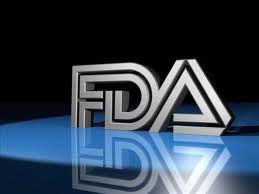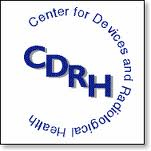Compliance Consultants has worked with the FDA's Center
for Devices and Radiological Health since 1976. The old
name was the Bureau of Radiological Health (BRH). Our
description reflects our appreciation of the environment in
which you seek to thrive.
The FDA/CDRH is a politically sensitive organization. Most of its recent changes are coincident with waves of political change. The recent strengthening for medical devices are reactions to trends having little to do with medical devices. That is political-not scientific. We do not criticize the fine people at CDRH/ODE. We simply define the environment.
These new initiatives termed "strengthening the 510(k) process" are essentially revising the 36 year old definition of "substantial equivalence". Congress defined ..."substantial equivalence (Class II)"" but this definition is being revised without Congress to the concept of "substantially identical".
After the 1976 Act was passed, Congress mandated the FDA would define and publish "performance standards" for most Class II devices, and those would supplant the use of "substantial equivalence". The FDA never did. Technology has moved too fast. The FDA could not "keep up".
Instead of "performance standards", CDRH has published some "guidance documents" to substitute for performance standards, but even absolute conformance does not ensure a determination of "substantial equivalence" since the "claim" alone can be determined not "substantially equivalent". Only a small number of the total number of devices are covered by "guidance documents". Many of those are now obsolete.
Even if the device conforms to a "Harmonized Standard", conformance does not ensure approval - since no claims are specified. This drives approvals into a nebulous cosmos.
The FDA/CDRH is a politically sensitive organization. Most of its recent changes are coincident with waves of political change. The recent strengthening for medical devices are reactions to trends having little to do with medical devices. That is political-not scientific. We do not criticize the fine people at CDRH/ODE. We simply define the environment.
These new initiatives termed "strengthening the 510(k) process" are essentially revising the 36 year old definition of "substantial equivalence". Congress defined ..."substantial equivalence (Class II)"" but this definition is being revised without Congress to the concept of "substantially identical".
After the 1976 Act was passed, Congress mandated the FDA would define and publish "performance standards" for most Class II devices, and those would supplant the use of "substantial equivalence". The FDA never did. Technology has moved too fast. The FDA could not "keep up".
Instead of "performance standards", CDRH has published some "guidance documents" to substitute for performance standards, but even absolute conformance does not ensure a determination of "substantial equivalence" since the "claim" alone can be determined not "substantially equivalent". Only a small number of the total number of devices are covered by "guidance documents". Many of those are now obsolete.
Even if the device conforms to a "Harmonized Standard", conformance does not ensure approval - since no claims are specified. This drives approvals into a nebulous cosmos.

The FDA defines "claims associated with a medical device" as part of its "approval". Other countries (Europe) leave this decision up to the healthcare providers. The FDA is shifting the focus away from what is safe to focus on the "claims" of Class II device.
The 1976 Act Congress passed is being changed by an accumulation of edicts to redefine that a Class II device must be "substantially identical". IF not, it must undergo clinical trials. This is not how Congress defined Class II when they envisioned this control.
These issues must be presented to explain these shifting burdens due to the lack of guidance documents at CDRH.


